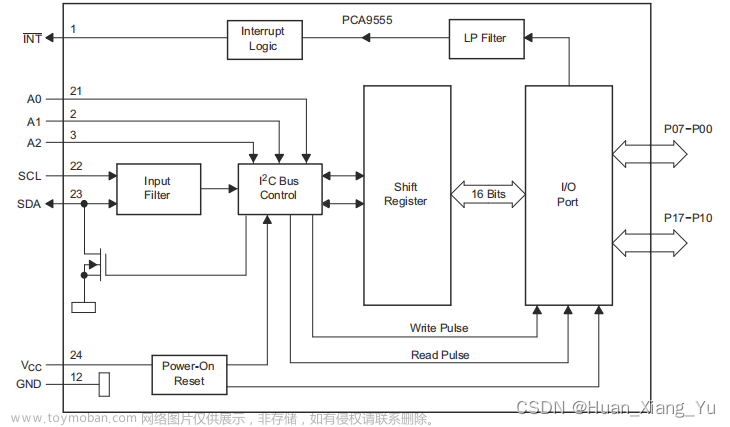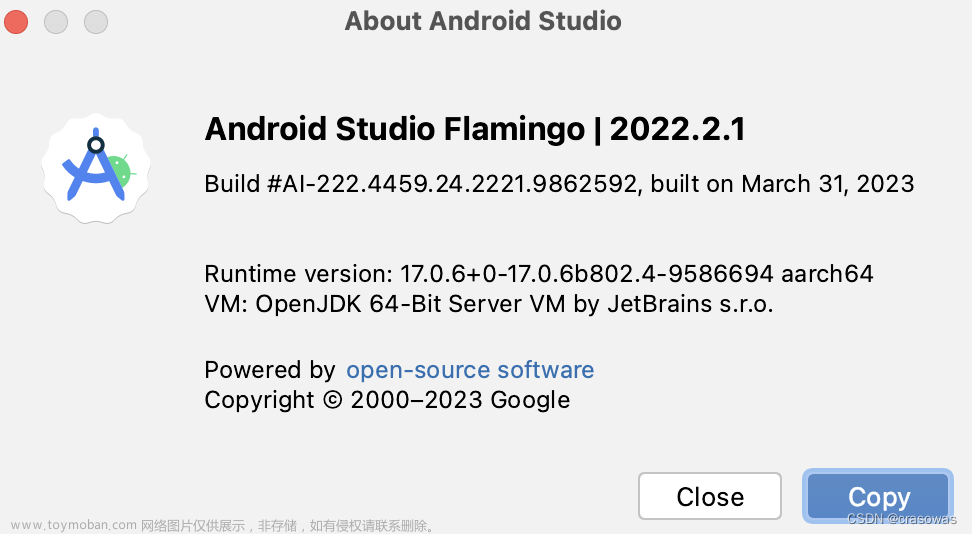IO流
IO:Input / Output
完成输入 / 输出
应用程序运行时——数据在内存中 ←→ 把数据写入硬盘(磁带)
内存中的数据不可持久保存
输入:从外部存储器(硬盘、磁带、U盘)把数据读入内存中。
输出:从内存中把数据写入外部存储器(硬盘、磁带、U盘)中,这样就可以保证,即使程序退出了,数据依然不会丢失。
File —— 代表磁盘上的文件或目录
listRoot:列出磁盘上所有的根目录
exists:判断是否存在
mkdir:创建目录
listFiles():列出当前目录下所有的文件和子目录
listFiles(FileFilter filter):列出当前目录下符合指定条件的文件和子目录
listFiles(FilenameFilter filter)
列出某个磁盘所有的文件——递归
import java.io.File;
public class ListE {
public static void main(String[] args) {
// 创建一个File,它代表了E盘
File e = new File("e:/Program Files");
List(e);
}
public static void List(File dir) {
System.out.println(dir + "目录下包含的文件和子目录有:");
// 该方法返回当前目录所包含的所有文件和子目录
File[] files = dir.listFiles();
for (File file : files) {
System.out.println(" " + file);
// 如果file是目录,继续列出该目录下所有文件
if (file.isDirectory()) {
List(file);
}
}
}
}
列出某个磁盘所有的.txt文件——递归
import java.io.*;
public class FileFilterTest {
public static void main(String[] args) {
File e = new File("e:/");
// 返回当前目录所包含的所有*.txt文件,此时就需要对文件进行过滤
File[] files = e.listFiles(new FileFilter() {
// pathname就代表正在处理的文件,如果该方法返回true,意味着该文件就被保留,否则该方法将会被过滤掉
@Override
// 没有比IOExcepiton更小的,所以只能用try catch
public boolean accept(File pathname) {
// 说明文件名以.txt结尾
try {
if (pathname.getCanonicalPath().endsWith("txt")) {
return true;
}
} catch (IOException e) {
e.printStackTrace();
}
return false;
}
});
for (File file : files) {
System.out.println(file);
}
}
}File的特征:只能访问磁盘上的文件和目录,它无法访问文件内容。
如果要访问文件的内容,必须使用IO流。
流的分类
1、按流的方向来分(从程序所在内存的角度来看)
(1)输入流
把外部输入读入当前程序所在内存
(2)输出流
把当前程序所在内存的数据输出到外部
2、按流处理的数据来分
(1)字节流
处理数据单位是字节(8bit),适应性广、功能强大
(2)字符流
处理的数据单元是字符。通常来说它主要用于处理文本文件
在处理文本文件时,比字节流方便
3、按流的角色来分
(1)节点流
直接和一个IO的物理节点(磁盘上的文件、网络)关联
(2)包装流(处理流 / 过滤流)
以节点为基础,包装之后得到的流
都继承了FilterXxx等基类
流的概念模型
输入流中的数据单元放入应用程序;应用程序中的数据单元放入输出流。

缓冲流
外部存储器的速度比内存的速度慢,外部存储器的读写与内存的读写并不同步
——通过缓冲就可以解决这种不同步
反正你把流用完了,
- 别忘记调用flush方法(把缓冲中的内容刷入实际的节点)
调用close()也可——系统会在关闭之前,自动刷缓冲
IO流一共涉及40多个类
| 字节流 | 字符流 | ||||
| 节点流 | InputStream | OutputStream | Reader | Writer | 抽象 |
| FileInputStream | FileOutputStream | FileReader | FileWriter | 访问文件 | |
| ByteArrayInputStream | ByteArrayOutputStream | CharArrayReader | CharArrayWriter | 数组 | |
| PipedInputStream | PipedOutputStream | PipedReader | PipedWriter | 访问管道 | |
| StringReader | StringWriter | 访问字符串 | |||
| 缓冲流 | BufferedInputStream | BufferedOutputStream | BufferedReader | BufferedWriter | 缓冲 |
| FilterInputStream | FilterOutputStream | FilterReader | FilterWriter | 抽象 | |
| PrintStream | PrintWriter | 打印 | |||
| InputStreamReader | OutputStreamWriter | 转换 | |||
| DataInputStream | DataOutputStream | 特殊 | |||
所有以InputStream结尾的都是字节输入流
所有以OutputStream结尾的都是字节输出流
所有以Reader结尾的都是字符输入流
所有以Writer结尾的都是字符输出流
1、FileInputStream
import java.io.*;
public class FileInputStreamTest {
public static void main(String[] args) throws IOException {
// 创建输入流,相当于得到一根有水的水管
FileInputStream fis = new FileInputStream("D:\\Program Files\\eclipse-java-2023-06-R-win32-x86_64\\workplace\\day\\src\\day13\\FileInputStreamTest.java");
// System.out.print((char)fis.read());// 该方法每次只读一个字节
/*
* 为了把fis中水滴全部“取出”内存,有两个做法:
* 1、用大桶
* 2、用循环
*/
byte[] buff = new byte[64]; // 我的水桶可以装64个“水滴”
int hasRead = -1;
//hasRead = fis.read(buff);// 用“桶”从fis(水管)中取水
while((hasRead = fis.read(buff)) > 0) {
// 上一次读取了几个字节,此处就输出几个字节
System.out.println(new String(buff, 0 ,hasRead));
}
}
}运行结果:

2、FileOutputStream
import java.io.FileOutputStream;
import java.io.IOException;
public class FileOutputStreamTest {
public static void main(String[] args) {
FileOutputStream fos = null;
try {
// 得到输出流,相当于得到一个没有水滴的水管
fos = new FileOutputStream("abc.txt");
fos.write(97); // 每次输出"一个字节“
fos.write(98);
fos.write(99);
fos.write(100);
fos.write(101);
fos.write("自由、民主的普世价值观~".getBytes());
} catch (IOException ex) {
ex.printStackTrace();
} finally {
try {
fos.close();
} catch (Exception ex) {
ex.printStackTrace();
}
}
运行结果:

复制文本文件
import java.io.*;
public class CopyTest {
public static void main(String[] args) {
// JDK 7提供了自动关闭资源的try语句
try (
// 创建输入流,得到一个有水滴的水管
FileInputStream fis = new FileInputStream("D:\\Program Files\\eclipse-java-2023-06-R-win32-x86_64\\workplace\\day\\src\\day13\\CopyTest.java");
// 创建输出流,得到一个空水管
FileOutputStream fos = new FileOutputStream("D:\\Program Files\\eclipse-java-2023-06-R-win32-x86_64\\workplace\\day\\src\\day13\\test.txt");
)
{
int hasRead = -1;
byte[] buff = new byte[128];
// 从fis里读取水滴,放入buff中
while((hasRead = fis.read(buff)) > 0) {
// 将buff中水滴写入fos,hasRead用于控制:读了多少,就写多少
fos.write(buff, 0, hasRead);
}
} catch (IOException ex) {
ex.printStackTrace();
}
}
}运行结果:

节点流直接与IO节点关联
——IO节点有很多:键盘、网络、文件、磁带……
过滤流:建立在节点流的基础之上

过滤流的好处:
——消除底层节点之间的差异
——使用过滤流的方法执行IO更加便捷
FileOutputStream →PrintStream
FileWriter→PrintWriter
如果已经知道要读的内容是字符内容,就可按如下方式转换:
InputStream→InputStreamReader→BufferedReader
1、 FileOutputStream →PrintStream
import java.io.*;
public class PrintStreamTest {
public static void main(String[] args) {
try (
// 创建节点流,节点流使用不方便
FileOutputStream fos = new FileOutputStream("D:\\Program Files\\eclipse-java-2023-06-R-win32-x86_64\\workplace\\day\\src\\day13\\my.txt");
// 把节点流包装成过滤流:消除节点流的差异,而且PrintStream的方法更加方便
PrintStream ps = new PrintStream(fos);
)
{
ps.println("我想");
ps.println("我想早");
ps.println("我想早点");
} catch (Exception ex) {
ex.printStackTrace();
}
}
}运行结果:

3、DataInputStream与DataOutputStream
它们是两个特殊的流——它们是过滤流(建立在已有IO的基础之上)
——它们只要增加一些特定的方法来读取特定的数据。
import java.io.*;
public class DataOutputStreamTest {
public static void main(String[] args) {
try (
// 创建节点流——与磁盘上的文件关联
FileOutputStream fos = new FileOutputStream("price.txt");
// 创建过滤流,过滤流建立在节点流的基础上
DataOutputStream dos = new DataOutputStream(fos);
)
{
dos.writeDouble(3.4);
dos.writeDouble(5.23);
dos.writeDouble(4.34);
dos.writeDouble(5.12);
} catch (Exception ex) {
ex.printStackTrace();
}
}
}运行结果:

import java.io.*;
public class DataInputStreamTest {
public static void main(String[] args) {
try (
// 先创建节点流,与指定物理节点(文件)建立读写
FileInputStream fis = new FileInputStream("price.txt");
// 以节点流来创建过滤流
DataInputStream dis = new DataInputStream(fis);
)
{
System.out.println(dis.readDouble());
System.out.println(dis.readDouble());
System.out.println(dis.readDouble());
} catch (Exception ex) {
ex.printStackTrace();
}
}
}运行结果:

重定向标准输入输出
System.in——标准输入。通常代表键盘。
System.out——标准输出。通常代表屏幕。
System.setOut() ——可以将标准输出重定向另一个输出流。
import java.io.*;
public class SetOutTest {
public static void main(String[] args) throws Exception{
// 可以将标准输出重定向到指定的输出流
System.setOut(new PrintStream("out.txt"));
System.out.println("ABC");
System.out.println("ABC");
System.out.println("ABC");
System.out.println("ABC");
}
}运行结果:输出的内容重定向到out.txt文本文件中

System.setIn() ——可以将标准输出重定向另一个输入流。
import java.io.*;
public class RedirectKeyIn {
public static void main(String[] args) throws Exception {
// 将标准输入重定向到RedirectKeyIn.java
System.setIn(new FileInputStream("RedirectKeyIn.java"));
//System.in,它是一个节点流,一般关联着物理键盘
//直接用System.In(InputStream——节点、字节、输入流)可以读取键盘输入
//缺点是:太繁琐、而且效率相当低下
//System.out.println(System.in.read());
InputStreamReader reader = new InputStreamReader(System.in);
BufferedReader br = new BufferedReader(reader);
String line = null;
// 控制BufferedReader每次读取一行
while ((line = br.readLine()) != null) {
System.out.println(line);
}
}
}运行结果:

Java虚拟机读取其他进程的数据
Java如何启动其他进程:Runtime实例.exec()
该方法的返回值是一个Process对象
Process——代表一个进程。
进程就是运行中的应用程序。
import java.io.*;
public class ReadFromProcess {
public static void main(String[] args) throws Exception{
Runtime runtime = Runtime.getRuntime();
// 启动javac应用程序,返回该应用程序对应的进程
// Process proc = runtime.exec("javac.exe -encoding UTF8 -d . ReadFromProcess.java");
Process proc = runtime.exec("javac.exe -encoding UTF8 -d . ReadFromProcess");
// 要得到javac应用程序输出的内容,此处应该用输入流?还是输出流?
// 对于javac来说,是输出;但对于我们应用程序来说,用输入流
InputStreamReader reader = new InputStreamReader(proc.getErrorStream());
BufferedReader br = new BufferedReader(reader);
String line = null;
StringBuilder sb = new StringBuilder();
// 控制BufferedReader每次读取一行
while ((line = br.readLine()) != null) {
//System.out.println(line);
sb.append(line);
}
// 如果有错误输出
if (sb.toString().length() > 0) {
System.out.println("编译出错,错误信息如下----");
// 输出错误提示
System.out.println(sb);
} else {
System.out.println("成功完成----");
}
}
}上面为“编译出错”的代码,下面为“成功完成”的代码



RandomAccessFile——随意(任意)访问文件
Random——想访问文件的哪个点,就访问文件的哪个点(任意)
RandomAccessFile实现了Closeable接口,所以可以使用自动关闭资源的try语句。
特征
1、既可读、又可写、还可追加。相当于InputStream与OutputStream合体。
RandomAccessFile它不会覆盖原有的文件内容。
2、只能访问文件!这就是它的局限性。
import java.io.*;
public class RandomAccessFileTest {
public static void main(String[] args) {
try (
// 使用RadomAccessFile创建一个只读的输入流
RandomAccessFile raf = new RandomAccessFile("RandomAccessFileTest.java", "r");
)
{
byte[] buff = new byte[1024];
int hasRead = -1;
while ((hasRead = raf.read(buff)) > 0) {
System.out.println(new String(buff, 0, hasRead));
}
} catch (Exception ex) {
ex.printStackTrace();
}
}
}
创建RandomAccessFile,需要指定读(r)、写(rw)模式
体现它的“random【任意】”性的方法
seek(long pos)——用于把记录指针移动到任意位置,想访问哪个点就访问哪个点。
一开始,它的记录指针位于文件的开始位置。
使用RandomAccessFile来追加文件内容
1、把记录指针移动到最后
2、执行输出即可
import java.io.RandomAccessFile;
public class AppendTest {
public static void main(String[] args) {
try (
// 使用RadomAccessFile创建一个只读的输入流
RandomAccessFile raf = new RandomAccessFile("AppendTest.java", "rw");
)
{
// 把记录指针移动到文件的最后
raf.seek(raf.length());
raf.write("//做人好累".getBytes());
} catch (Exception ex) {
ex.printStackTrace();
}
}
}使用RandomAccessFile来插入文件内容
1、把记录指针移动到指定位置
2、从当前位置到文件结尾的内容,先读取,并保存
3、输出要插入的内容
序列化
Java对象(内存)->二进制流
目的
1、在有些时候,需要把对象存储到外部存储器中持久化保存。
2、在有些时候,需要把对象通过网络传输。
可序列化的对象
Java要求序列化的类实现下面任意两个接口
1、Serializable:接口只是一个标记性的接口,实现该接口无需实现任何方法
2、Externalizable:实现该接口要实现方法。
序列化的IO流
ObjectInputStream——负责从二进制流“恢复”对象。readObject
ObjectOutputStream——负责把对象保存到二进制流中。writeObject
import java.io.*;
class Apple implements Serializable{
private String name;
private String color;
private double weight;
public Apple() {
super();
}
public Apple(String name, String color, double weight) {
super();
this.name = name;
this.color = color;
this.weight = weight;
}
public String getName() {
return name;
}
public void setName(String name) {
this.name = name;
}
public String getColor() {
return color;
}
public void setColor(String color) {
this.color = color;
}
public double getWeight() {
return weight;
}
public void setWeight(double weight) {
this.weight = weight;
}
public String toString() {
return "Apple[name="
+ name +",color=" + color
+ ",weight=" + weight + "]";
}
}
public class WriteObject {
public static void main(String[] args) {
Apple ap = new Apple("红富士", "红色", 3.4);
System.out.println(ap);
// 当程序结束时,虚拟机退出,内存中的Apple对象就被销毁了
try (
ObjectOutputStream oos = new ObjectOutputStream(
new FileOutputStream("app.bin"));
)
{
oos.writeObject(ap); //把ap对象写入app.bin文件中
}
catch (Exception ex) {
// TODO: handle exception
}
}
}
import java.io.*;
public class ReadObject {
public static void main(String[] args) {
try (
ObjectInputStream ois = new ObjectInputStream(
new FileInputStream("app.bin"));
)
{
Apple ap = (Apple)ois.readObject();
System.out.println(ap);
}
catch (Exception ex) {
ex.printStackTrace();
}
}
}序列化机制
总结
Java传统IO的基本体系
| 字节输入流 | 字节输出流 | 字符输入流 | 字符输出流 | |
| 访问文件 | InputStream | OutputStream | Reader | Writer |
| 访问数组 | FileXxx | |||
| 访问管道 | ByteArrayXxx | CharArrayXxx | ||
| 访问字符串 | StringXxx | |||
| 过滤流 | FilterInputStream | FilterOutputStream | FilterReader | FilterWriter |
| 打印流 | PrintStream | PrintWriter | ||
| 转换流 | InputStreamReader | OutputStreamWriter | ||
| 特殊流 | DataInputStream | DataOutputStream | ||
| ObjectInputStream | ObjectOutputStream |
RandomAccessFile
1、它只能访问文件。相当于DataInputStream和DataOutputStream组合文章来源:https://www.toymoban.com/news/detail-722419.html
2、任意,由seek(int pos)。文章来源地址https://www.toymoban.com/news/detail-722419.html
到了这里,关于【疯狂Java讲义】Java学习记录(IO流)的文章就介绍完了。如果您还想了解更多内容,请在右上角搜索TOY模板网以前的文章或继续浏览下面的相关文章,希望大家以后多多支持TOY模板网!









